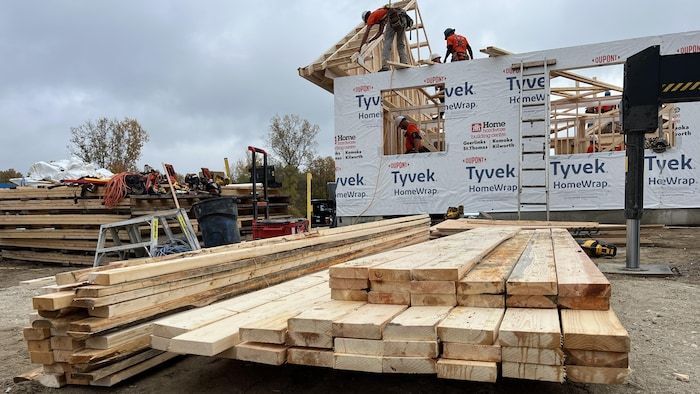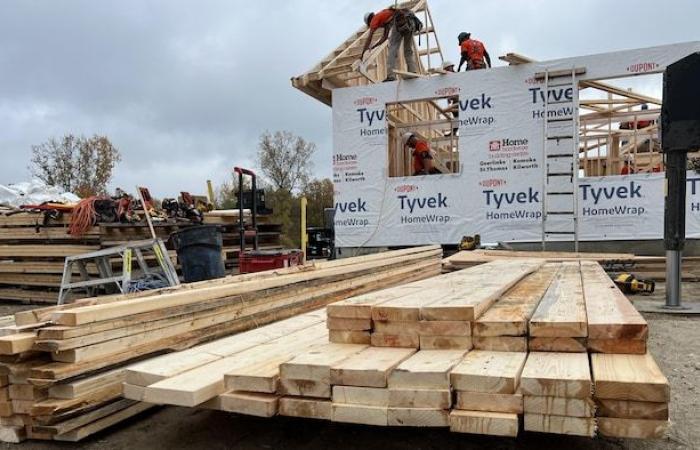Housing experts say several ideas that have proven successful elsewhere deserve to be applied in Canada.
They argue that the widespread adoption of government-supported affordable housing, the growth of unconventional models, such as cooperatives and co-housing, and the increased use of advanced construction techniques could play a role in improving the system .
These ideas, which have started to gain ground in the country in recent years, are already well established in several regions of Europe.
There are many very interesting examples that Canada can learn from
says Carolyn Whitzman, principal investigator at the School of Cities from the University of Toronto and author of the book Home Truths: Fixing Canada’s Housing Crisis.
The situation in some places like Vienna, where a quarter of the inhabitants live in social housing, is the result of very specific historical circumstances, but other regions show what is still possible today.
Open in full screen mode
Denmark has created almost 21% of “non-market” housing in 2022, according to the OECD. (Archive photo)
Photo: Getty Images / Agence France-Presse / SERGEI GAPON
France has committed to ensuring that 20% of its housing is non-market
whether or not subsidized by the State, by combining the purchase of buildings and the construction of new buildings. It has already reached the 17% mark, while managing to integrate housing into existing neighborhoods in order to preserve diversity, says Ms. Whitzman.
Also read and listen:
She recalls that Canada had adopted the same objectives of non-market construction in the 1970s, but that this approach was abandoned in the 1990s, when the federal government disengaged from housing construction and financing declined. dried up.
Countries such as France, Denmark and Austria have developed longer-term financing plans for affordable housing by setting up schemes under which governments provide subsidized loans which, when repaid, amount to tens of years later, are then reused to build new ones.
This type of revolving fund is a sort of gold standard, because it means the policy is sustainable. We have to think about deadlines of 30 years.
According to the most recent data from the Organization for Economic Co-operation and Development (OECD), the Danish system has created around 21% of housing non-market
in 2022. In Canada, this type of housing represents approximately 3.5% of housing, according toOECD.
Open in full screen mode
Carolyn Whitzman is a senior researcher at the School of Cities at the University of Toronto. (Archive photo)
Photo : Carolyn Whitzman
The federal government has implemented numerous financing programs to increase the number of housing units, including a $55 billion apartment construction loan program, a $14 billion affordable housing fund and $4 billion for the rapid housing initiative.
While some programs, like the Rapid Housing Initiative, specifically target people with severe housing needs, Whitzman says government programs overall aren’t doing enough for low-income people. , in part because of a vague definition of what affordable housing actually is.
Some argue that eventually, if there is enough supply, it will trickle down to low-income people, but that would take 30 or 40 years, when we are currently experiencing a housing crisis.
Steady funding and long-term commitments to housing non marchand
also allow builders of this type of housing to develop sufficiently to become more sustainable.
In Finland, a pioneering country of the approach housing first
to end homelessness, which is essentially providing housing to anyone who needs it, the nonprofit Y-Foundation is the fourth largest owner in the country.
Canada has some large home builders, but there is room for growth and consolidation, Whitzman believes.
Diversity really is essential
According to Sasha Tsenkova, a professor at the University of Calgary’s school of architecture, planning and urban planning, the supply of non-market housing and a greater variety of housing options in general are helping to stabilize the entire housing stock.
Diversity really is essential for resilience
she says.
The diversity of housing supply – which includes off-market rentals, market rentals with security of tenure and price controls, as well as a variety of housing types to purchase – reduces pressure to enter the market. market and allows for more stable progression up the housing ladder, she adds.
People are not forced to make the choice to become owners
says Ms. Tsenkova.
By creating policies that make homeownership less necessary, we move away from the asset-based mentality that prevails in Canada, she emphasizes.

Open in full screen mode
The Swedes developed construction techniques different from those used in Canada that would allow housing to be built more quickly at lower cost. (Archive photo)
Photo : - / Andrew Lupton
Diversity in housing types can also foster growth in areas such as co-ops, which come in several models, or cohousing, which is community-oriented where housing units are individually owned, but where the emphasis is in common areas.
The federal government has injected $1.5 billion to create more housing cooperatives, while co-housing is also gaining ground.
It is important for Canadians to know that there are many other ways to live. It’s not just about renting an apartment or owning an individual home or a detached house
explains Ren Thomas, associate professor at the school of urban planning at Dalhousie University.
In addition to different types of ownership, there is also innovation on the construction side of buildings, Thomas says, noting that countries like Sweden have widely adopted modular construction techniques that make construction faster and potentially less expensive.
The construction techniques used in some countries in Europe are very advanced and, of course, they have European sustainability standards, they are more concerned about climate change.
Canada is working to develop modular construction, but success also requires long-term commitments and stable demand.
However, European countries are far from having solved the housing shortage, since there is no easy solution to this problem.
While Canada is increasing its programs, the results are so far mixed after so many years of absence in this area, according to Ms. Whitzman.
This is partly because the federal government has been absent from housing policy for three decades and has made many mistakes. We are only at the first steps.








